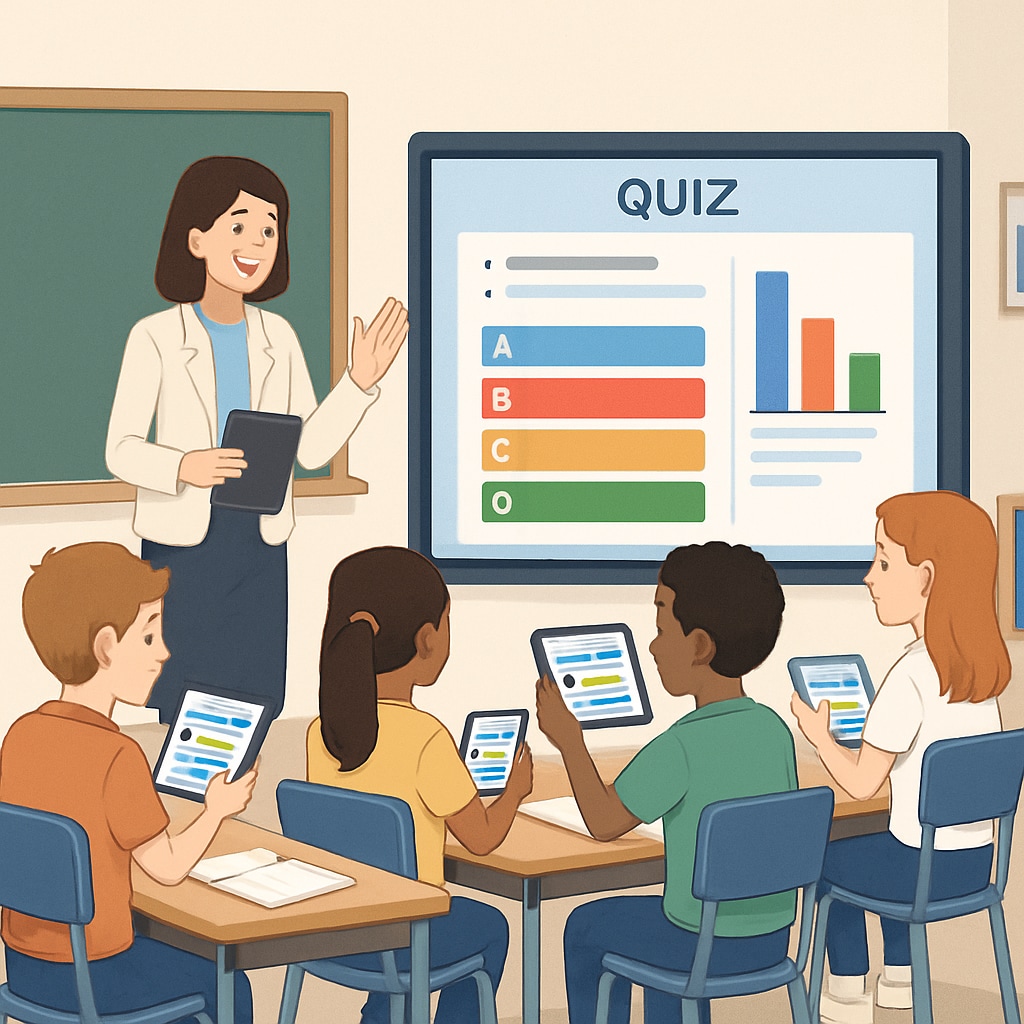Effective assessment tools are crucial in education, particularly when selecting high-quality quiz resources for K-12 students. These tools help teachers evaluate learning progress and identify areas for improvement. However, with the abundance of options available, how can educators and parents ensure they are choosing the most suitable resources? This article will guide you through the process of selecting quiz tools that truly enhance learning and align with your educational goals.
Why Quality Quiz Resources Matter
Quiz resources are more than just tools for testing knowledge. They play a significant role in reinforcing concepts, boosting confidence, and preparing students for real-world applications. Effective assessment tools are designed to complement teaching methods, offering insights into students’ strengths and weaknesses while fostering an engaging learning environment.
For example, adaptive quizzes that adjust to a student’s learning level can provide personalized feedback, making them an excellent choice for diverse classrooms. Moreover, high-quality quiz platforms often include analytics that help educators track progress over time.

Key Features to Look For in Quiz Resources
When evaluating quiz tools, it’s essential to focus on features that ensure both effectiveness and accessibility. Below are some critical aspects to consider:
- Alignment with Curriculum: Ensure the quizzes are based on the relevant educational standards and grade levels.
- Customization Options: Look for tools that allow you to tailor questions, difficulty levels, and topics to meet individual student needs.
- Engagement Factor: Interactive and gamified elements can make quizzes more appealing to students, encouraging active participation.
- Feedback Mechanism: Detailed feedback helps students understand their mistakes and learn from them.
- Accessibility: Check if the resource is compatible with various devices and supports students with disabilities.
For a deeper understanding of how quizzes can enhance learning, you can explore this Wikipedia article on assessments. It provides valuable insights into the role of assessments in education.
Top Quiz Resources for K-12 Education
Based on extensive research, here are a few popular and effective quiz platforms for K-12 students:
- Kahoot!: Known for its gamified approach, Kahoot! offers interactive quizzes that students love.
- Quizlet: Ideal for vocabulary building and concept reinforcement, Quizlet is widely used in classrooms.
- Google Forms: A flexible and free tool, Google Forms allows teachers to create customized quizzes with ease.
To learn more about the science behind educational assessments, the Britannica article on educational assessments is a highly recommended read.

How to Implement Quiz Resources Effectively
Selecting the best quiz tools is only the first step. To maximize their potential, consider the following tips:
- Set Clear Objectives: Define what you aim to achieve with each quiz, whether it’s reinforcing knowledge or assessing progress.
- Involve Students: Encourage students to provide feedback on the quizzes to ensure they find them engaging and useful.
- Integrate with Teaching: Use quiz results to adjust your teaching strategies and address learning gaps.
By implementing these strategies, teachers and parents can ensure that quiz resources are not just tools for assessment but catalysts for meaningful learning experiences.
Conclusion: Making Informed Decisions
Choosing the right quiz resources for K-12 students is a critical decision that impacts their learning journey. By focusing on alignment with curriculum, engagement, and adaptability, educators and parents can select tools that truly make a difference. With careful implementation, these resources can transform assessments into powerful learning opportunities, ensuring that every student reaches their full potential.
Investing time in finding the right resources is an investment in a child’s education. Therefore, start exploring the options today and make informed choices that enhance both teaching and learning.
Readability guidance: Maintain concise paragraphs and use lists to summarize key points. Incorporate transition words to ensure a smooth flow of ideas. Keep passive voice minimal and distribute keywords evenly throughout the article.


